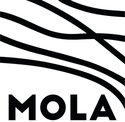Beach replenishment and derived archaeological material
Museum of London Archaeology, 2008. https://doi.org/10.5284/1000288. How to cite using this DOI
Data copyright © Museum of London Archaeology unless otherwise stated
This work is licensed under the ADS Terms of Use and Access.
Primary contact
David
Bowsher
Director of Research
Museum of London Archaeology
Mortimer Wheeler House
46 Eagle Wharf Road
London
N1 7ED
UK
Tel: 020 7410 2285
Resource identifiers
- ADS Collection: 807
- ALSF Project Number: 4000
- DOI:https://doi.org/10.5284/1000288
- How to cite using this DOI
Overview
The Beach Replenishment Project is a brief specifically to investigate the relationship between the Mablethorpe to Skegness beach replenishment scheme and extraneous archaeological material derived from offshore aggregate extraction. The core objective of English Heritage ALSF Projects is to reduce the impact on the historic environment of aggregate extraction, both terrestrial and marine. The Beach Replenishment Project specifically seeks to:
- Develop the capacity to manage aggregate extraction landscapes in the future
- Promote understanding of the conservation issues arising from the impacts of aggregates extraction on the historic environment
In terms of the research priorities laid out in Taking to the Water: English Heritage's Initial Policy for The Management of Maritime Archaeology in England (Roberts and Trow 2002) the Beach Replenishment Project also aims to:
- Enhance and validate the Maritime Record of the NMR through evaluation of the study area
- Help provide understanding and management of the maritime historic environment specifically the stability of offshore environments in extraction areas and the stability of derived material on replenished beaches
- Improve understanding of the drowned coastal landscape and palaeoenvironments of the replenishment and extraction areas
The assessment has been carried out in accordance with guidance from various bodies including Institute of Field Archaeologists (IFA) Standard and Guidance for Archaeological Desk-based Assessment (IFA 1999), Marine Aggregate Dredging and the Historic Environment produced by the British Marine Aggregate Producers Association (BMAPA) and English Heritage (BMAPA /English Heritage 2003). The latter document aims to ensure the effective and practical consideration of the historic environment, in the licensing of marine aggregate extraction, and elaborates on the guidance provided in the Code of Practice for Seabed Developers produced by the JNAPC in 1995.
Secondary sources and archaeological records of known sites were reviewed within the coastal and marine study areas. Models of sea level change in the Southern North Sea were also analysed, to establish when the marine study area was habitable. These were then compared to patterns of human occupation and activity during the relevant periods, derived from known sites in Britain and other North Sea countries.
Records of known terrestrial and maritime sites, within the study areas, were overlaid on a series of base maps, to demonstrate relationships with underlying geology and proximity to licensed dredging areas, in a Geographical Information System (GIS). Dredging related impacts upon the known and potential archaeological heritage were identified in the marine study area. Possible archaeological impacts, associated with replenishment and coastal processes, were also identified within the coastal study area. The significance of the effects of such impacts were considered, taking into account previous disturbance and the importance of the known and potential archaeological heritage.
The Digital Archive
The digital archive currently contains the following resources:
- Lyon, J. 2005: Beach Replenishment and Derived Archaeological Material. Mablethorpe to Skegness beach replenishment scheme Lincolnshire. Unpublished MoLAS report.
Full project report with all figures available as PDF files can be downloaded here.







